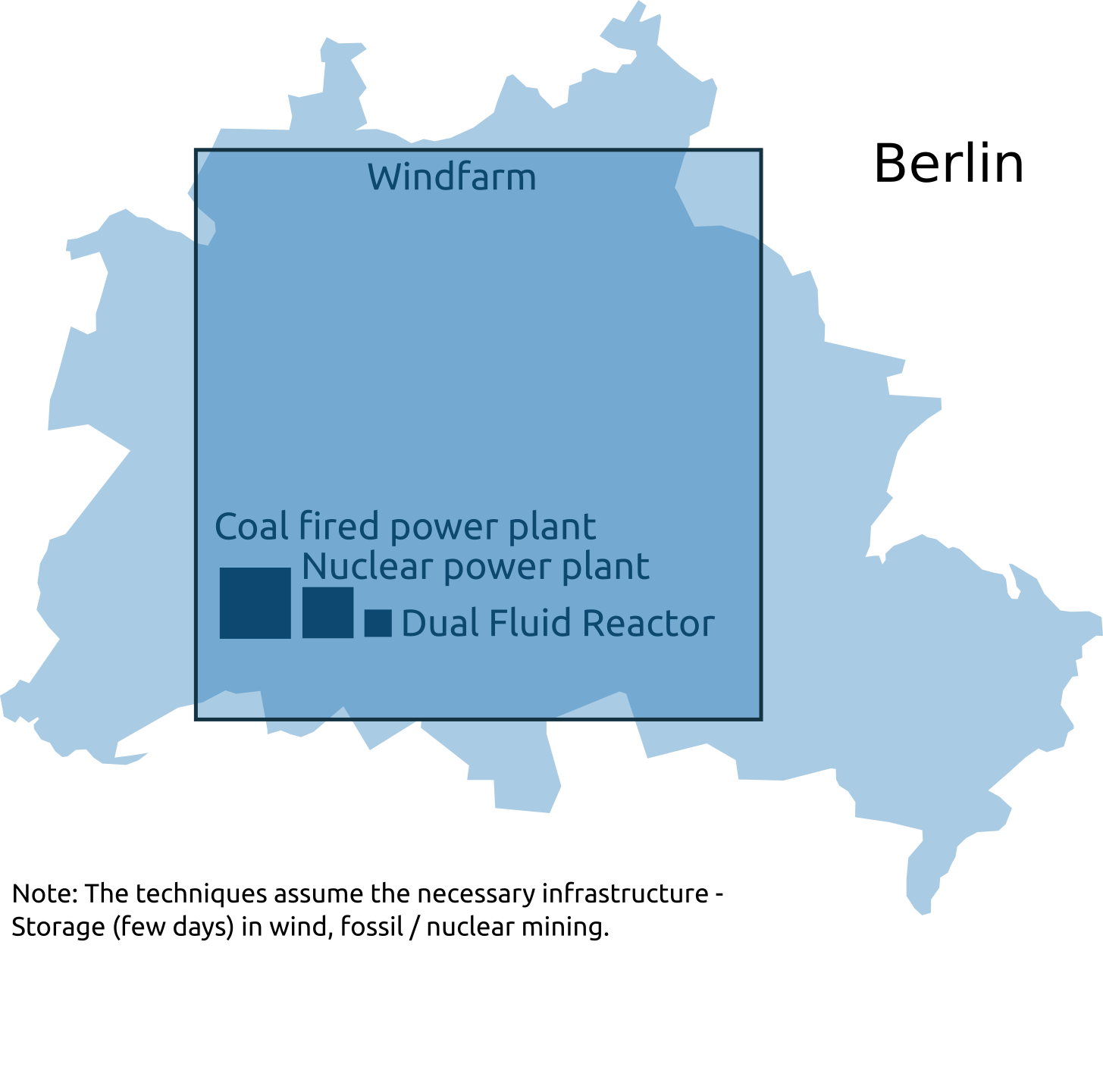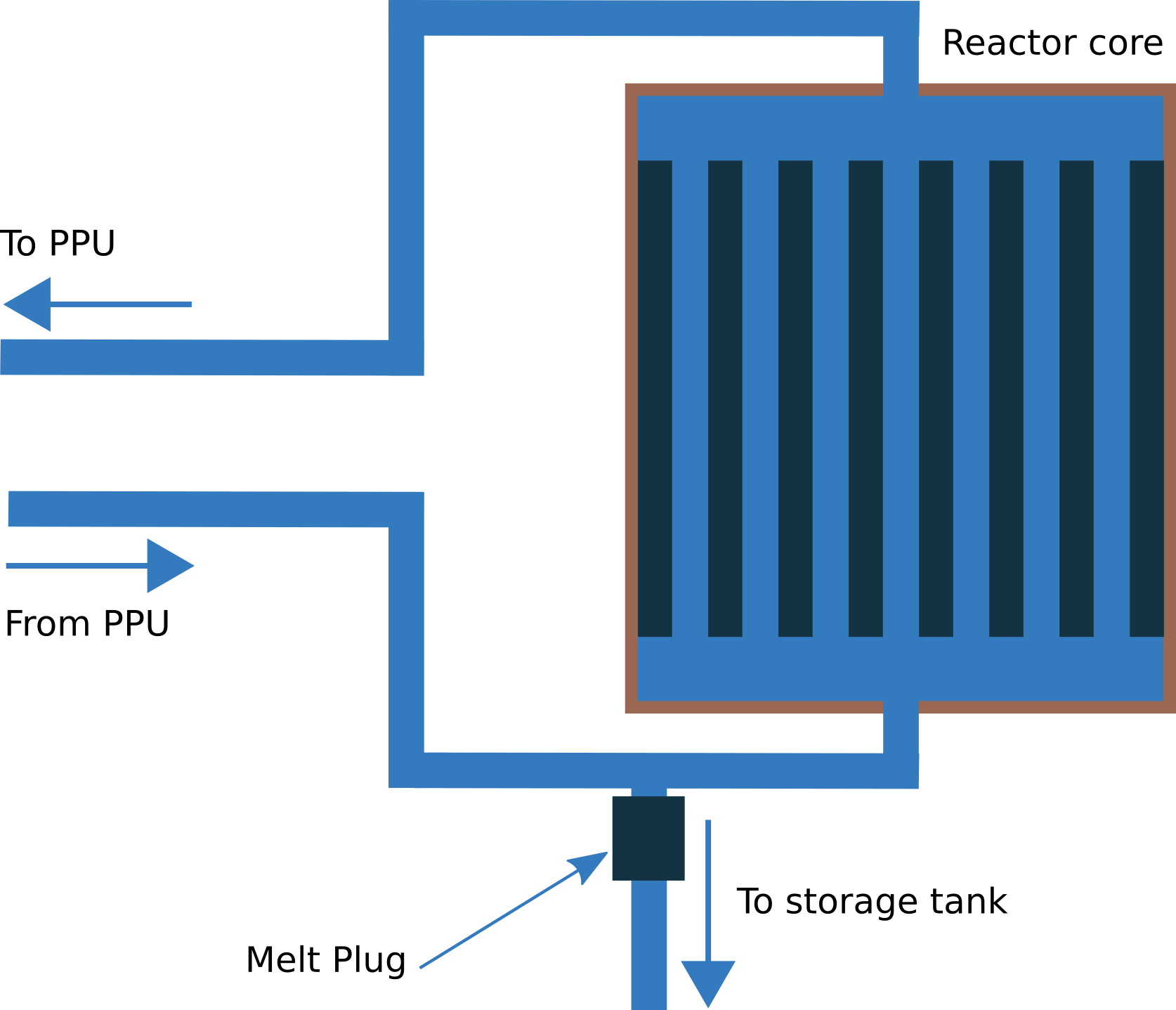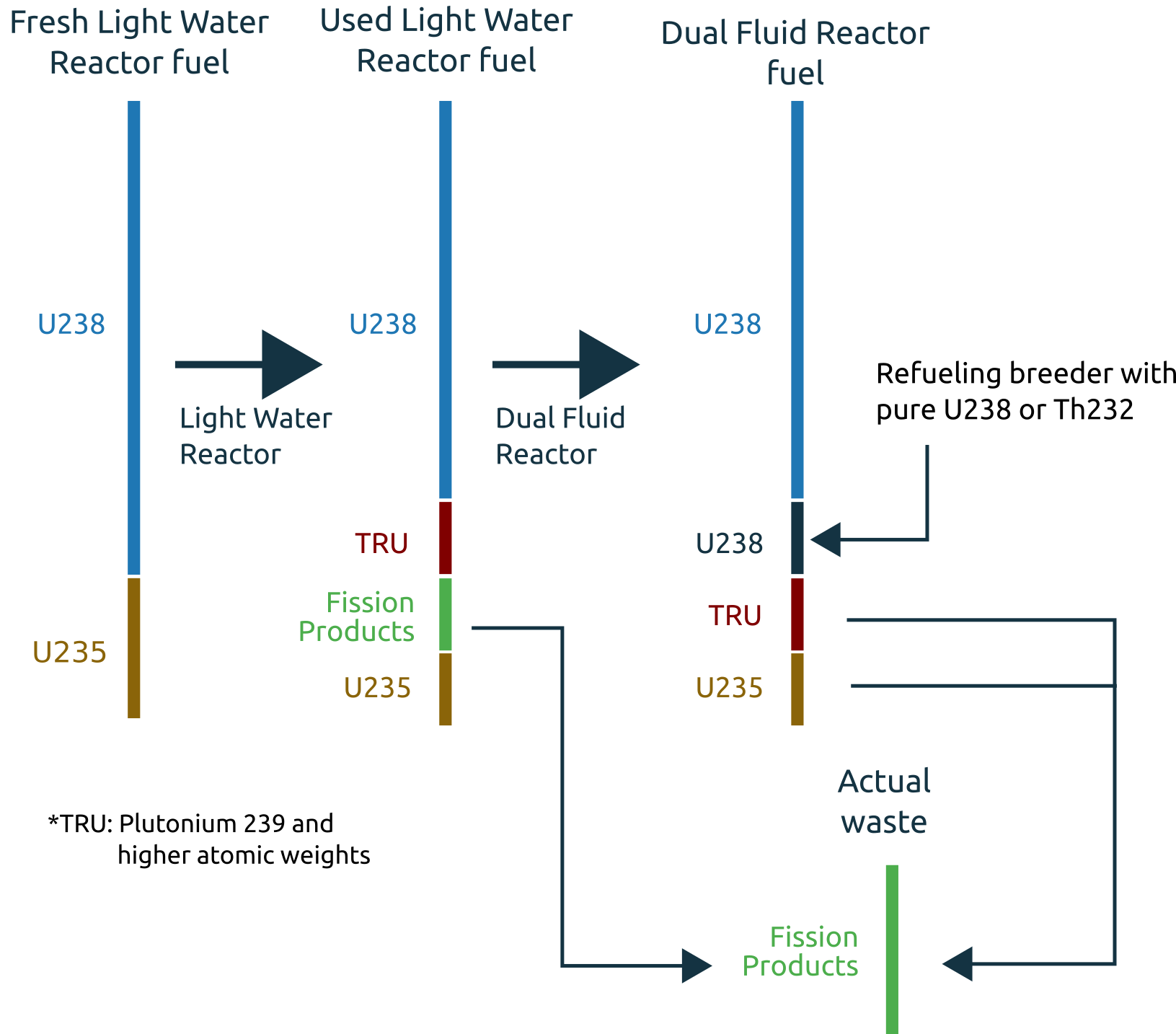A revolutionary energy source
Produced by atoms. Secured by gravity.
A Generation IV Development
Effizienz
Electricity
 High-Efficiency Turbogenerator
High-Efficiency Turbogenerator
Frogs won’t turn red because there’s a DFR operating nearby! The higher a power plant’s operating temperature, the more efficiently can heat be converted into electricity — this means less heat dissipation to the environment. The DFR operates at 1000 °C, giving a thermal efficiency of 60%. Protecting the environment and resources.
 Desalination
Desalination
Turbine heat loss at 250° C need not go to waste: suitable for seawater desalination. Californian draughts may soon be a footnote in history books.
Process Heat
 Fuels
Fuels
Personal mobility without mineral oil? Nuclear process heat is your friend! DFRs enable cheap hydrazine production, which can be used in fuel cell cars, going twice the distance of gasoline cars for the same price.
 Hydrogen Synthesis
Hydrogen Synthesis
If pure hydrogen is asked for — e.g. for steel production instead of coke —, the DFR is the best choice, too. Through the HOT-ELLY-Process or Sulphur-Iodine-Cycle, water can be dissociated for a reasonable price.
Medical Isotopes
 Scintigraphy
Scintigraphy
In order to treat cancer or bone fractures, hospitals often use radioactive tracers. They show the doctors precisely, where to operate. With the DFR, radiotracers can be produced most economically.
 Molybdenum Production
Molybdenum Production
Technetium 99m is one of the most important tracers. It is created from the predecessor Molybdenum 99, which is produced in research reactors — complex and expensive. The DFR can help here: A single plant will output multiples of world demand, isotopically pure.











